Clear Rear View
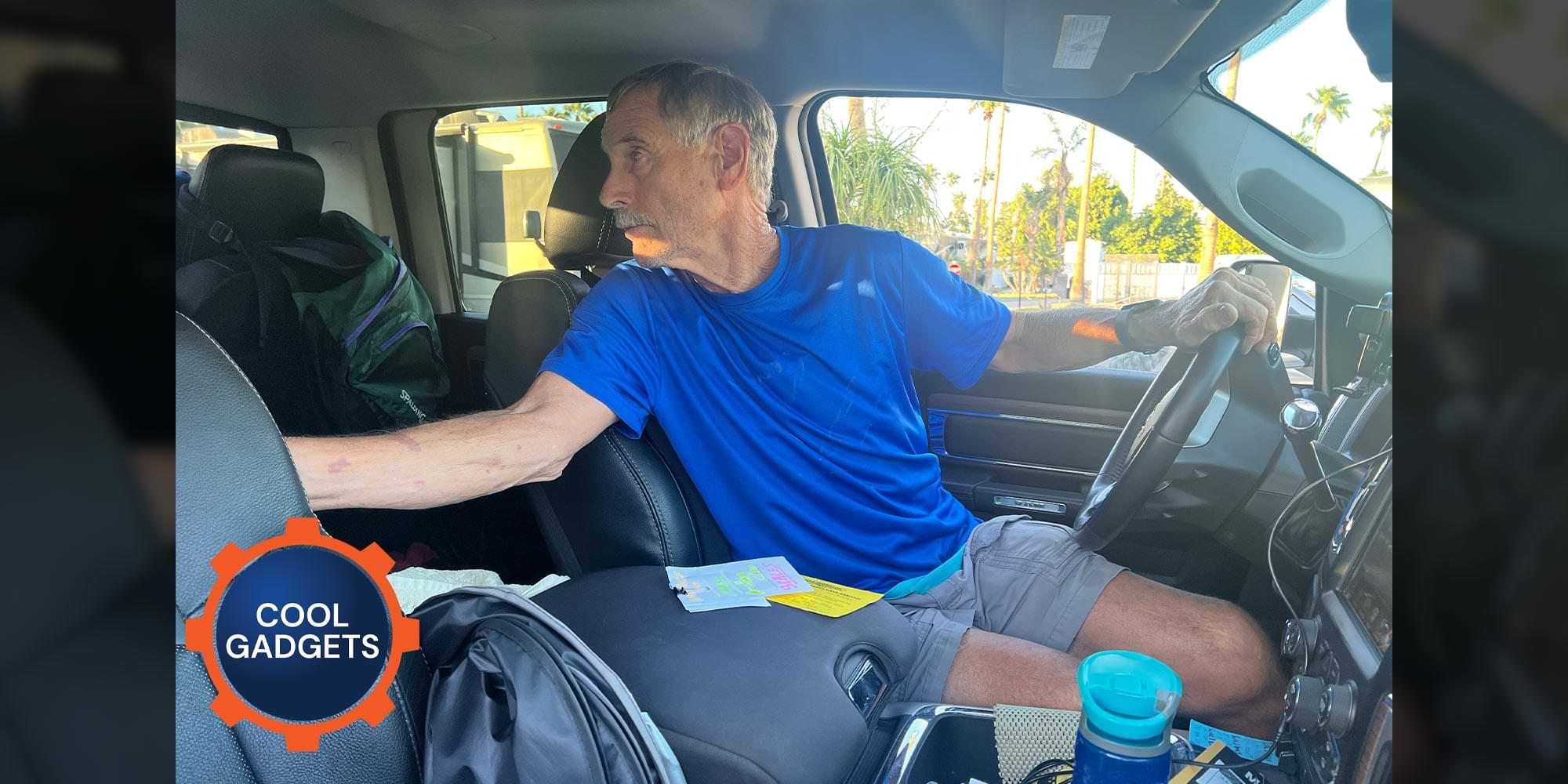
Hitching up a fifth wheel requires that the driver have a clear view of the kingpin and saddle in order to make the connection. Seems like a simple deal — but after a recent cervical disc replacement, I discovered that I could no longer turn my head and body enough to see out the back window of my truck to line up the kingpin in the saddle slot.
Hitching up is even more difficult in my situation since I have a Sidewinder kingpin box, which requires seating a wedge to immobilize the kingpin. Positioning the wedge in the saddle requires almost a perfect line-up — and every time I turned my body to view the “action” my foot came off the brake pedal, which is not safe.
Thinking outside the box, I figured there’s got to be a better way, which led me to a wireless backup camera. There are dozens of backup cameras that can be found online, so I looked for a wireless model with good reviews on monitor resolution quality as well as the ability to show enough detail on the smallish 5-inch screen. And, of course, I wanted a wireless camera that has a magnetic base as well as a built-in lithium battery that’s rechargeable.
I settled on a DoHonest Magnetic Wireless Backup Camera & Monitor Kit, which sells on Amazon for $149.99 (you gotta’ love the names for these products). My initial inspection upon arrival of the package revealed pretty good workmanship and feel, so I charged the camera battery and started looking for places to mount the components.
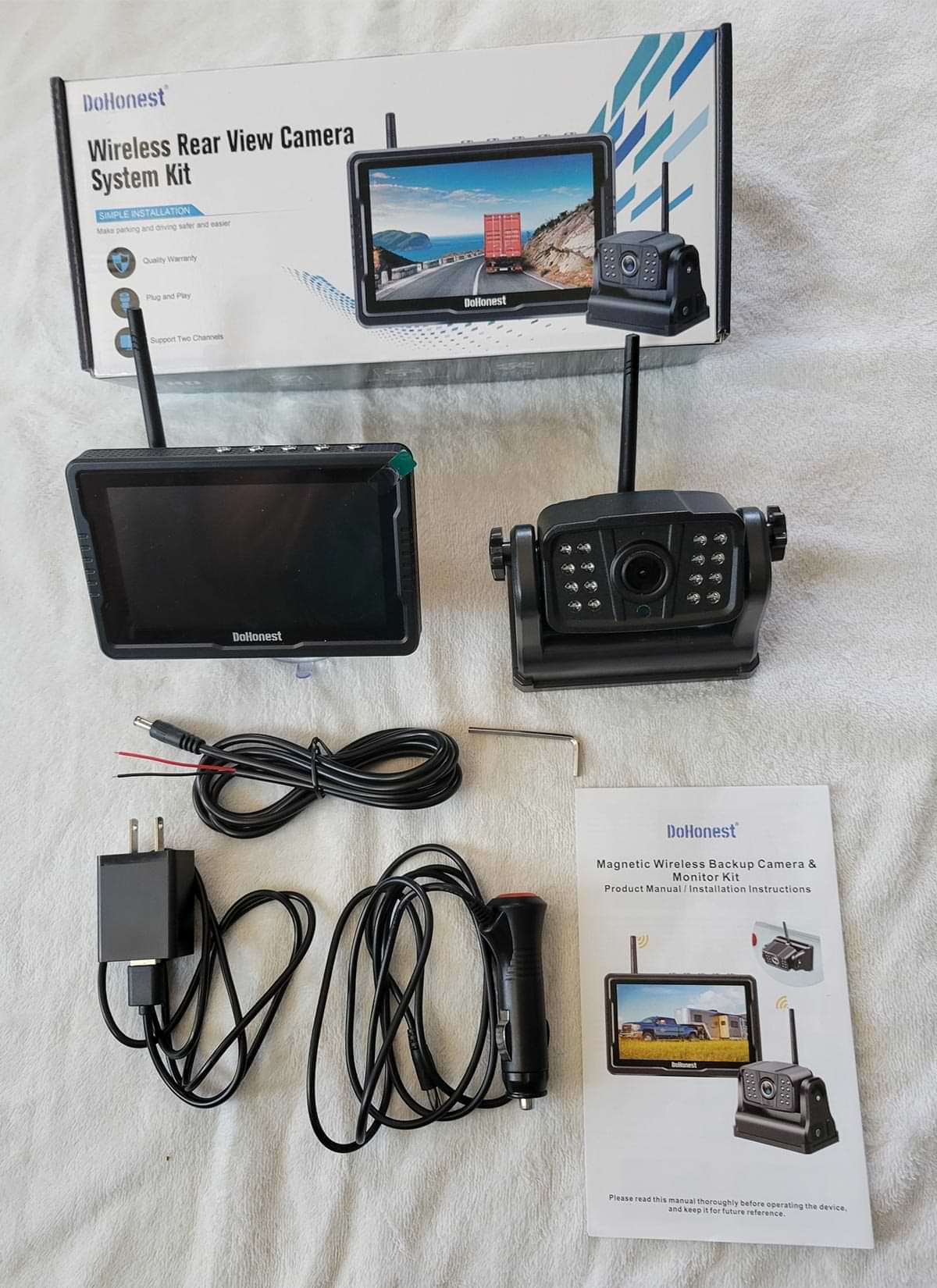
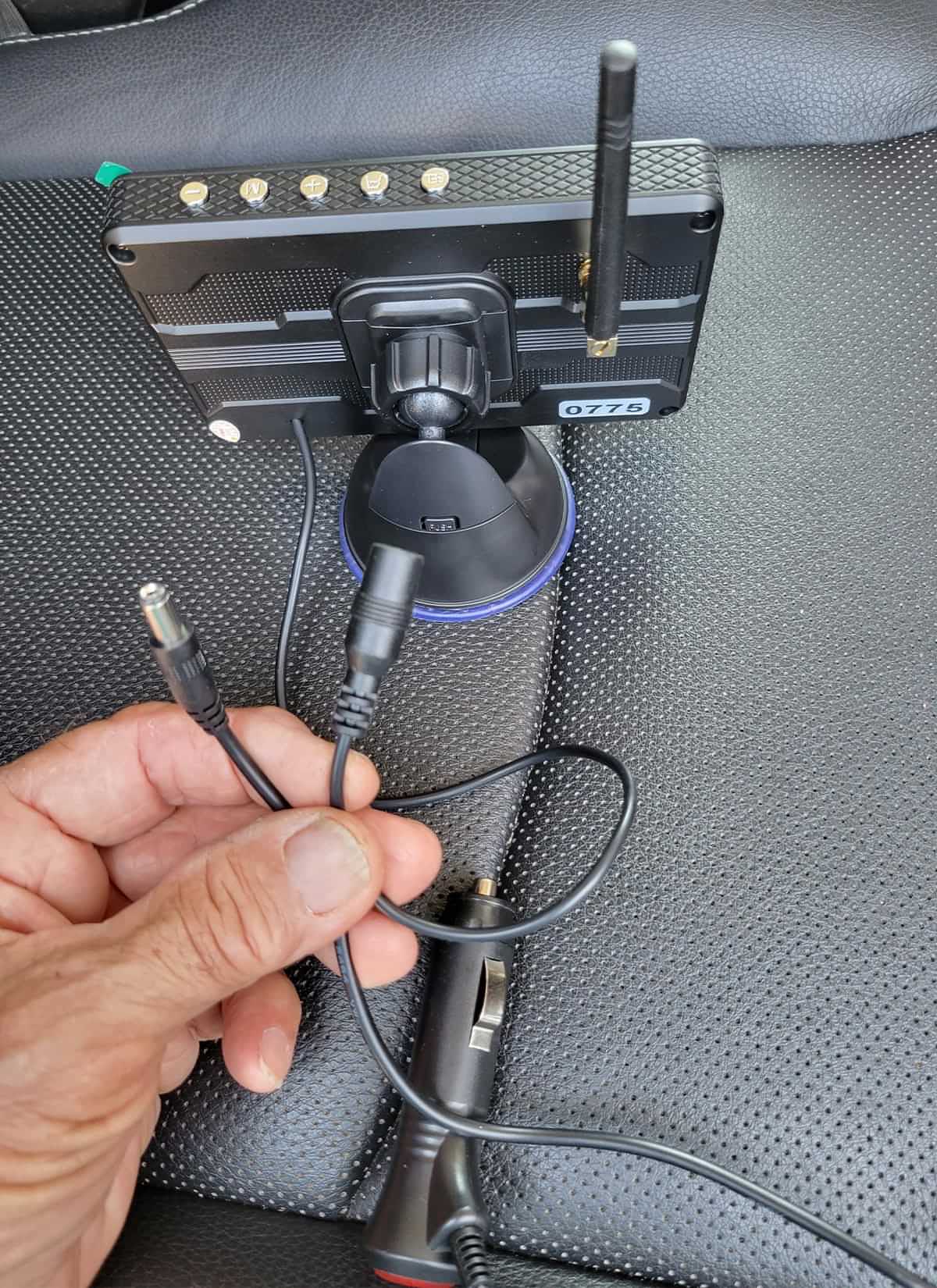
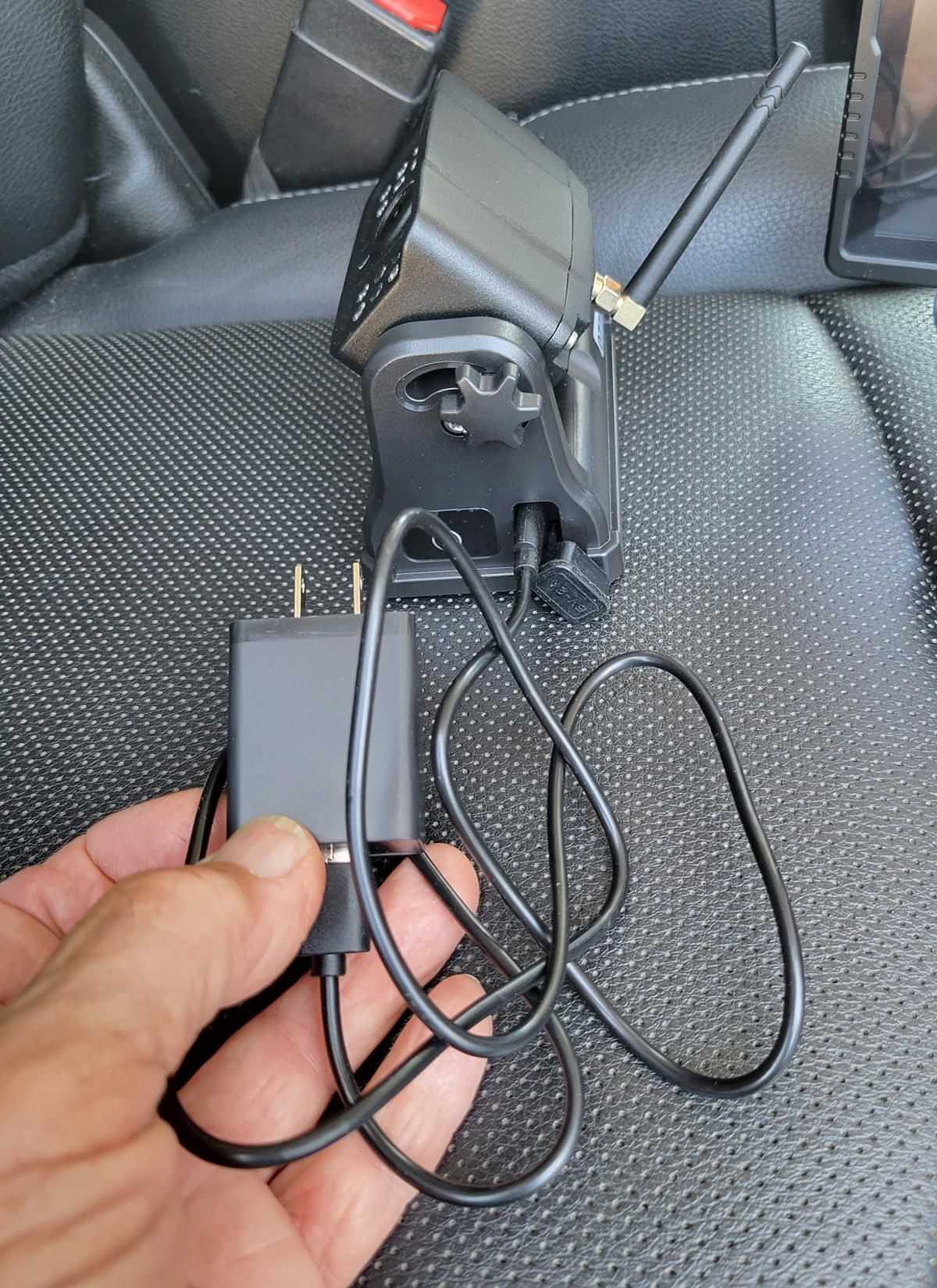
Since the camera base is magnetic, I initially figured that the truck cab was the logical place to “stick” the camera. But the video broadcasted to the monitor screen — offering images via a 50-degree wide-angle view from the camera — was too far away from the action when in this location and proved difficult to decipher as the kingpin traveled into the hitch saddle slot. Next, I tried mounting the camera to the top of the toolbox. Unfortunately, that wound up being too low and projected a poor view of the kingpin.
After additional trial and error, I ended up mounting the camera to the front of the hitch structure, which is just behind the slot in the saddle. I found a vinyl-coated steel angle bracket in my “junk” box to which the camera “stuck” to quite readily — in fact, the camera magnet was so strong that I could barely get it off the piece of metal. I then attached the bracket (using two screws) to a piece of plywood, which was just about the right height. For positioning during the hitching process, the new apparatus was C-clamped to the back of the hitch — and it worked!
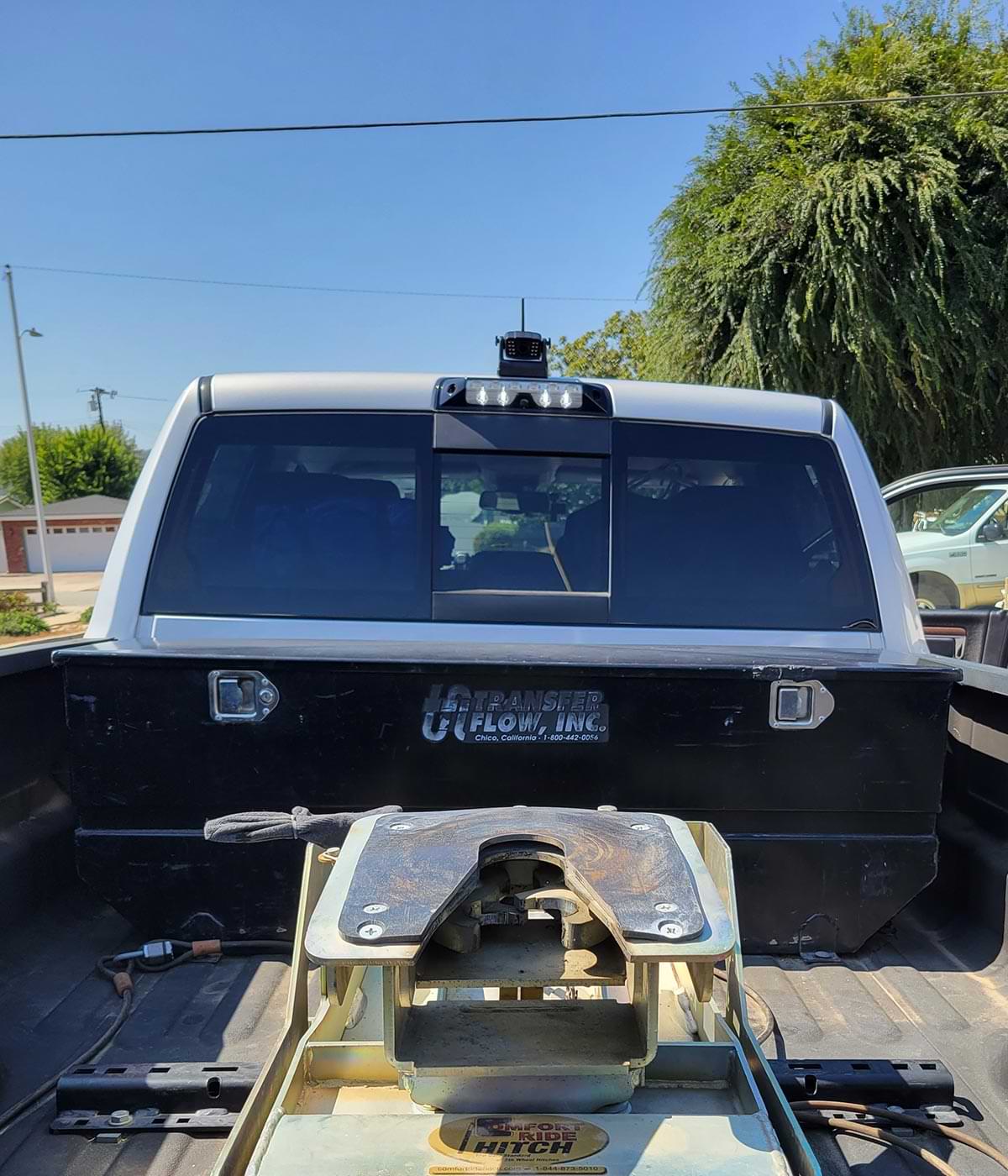
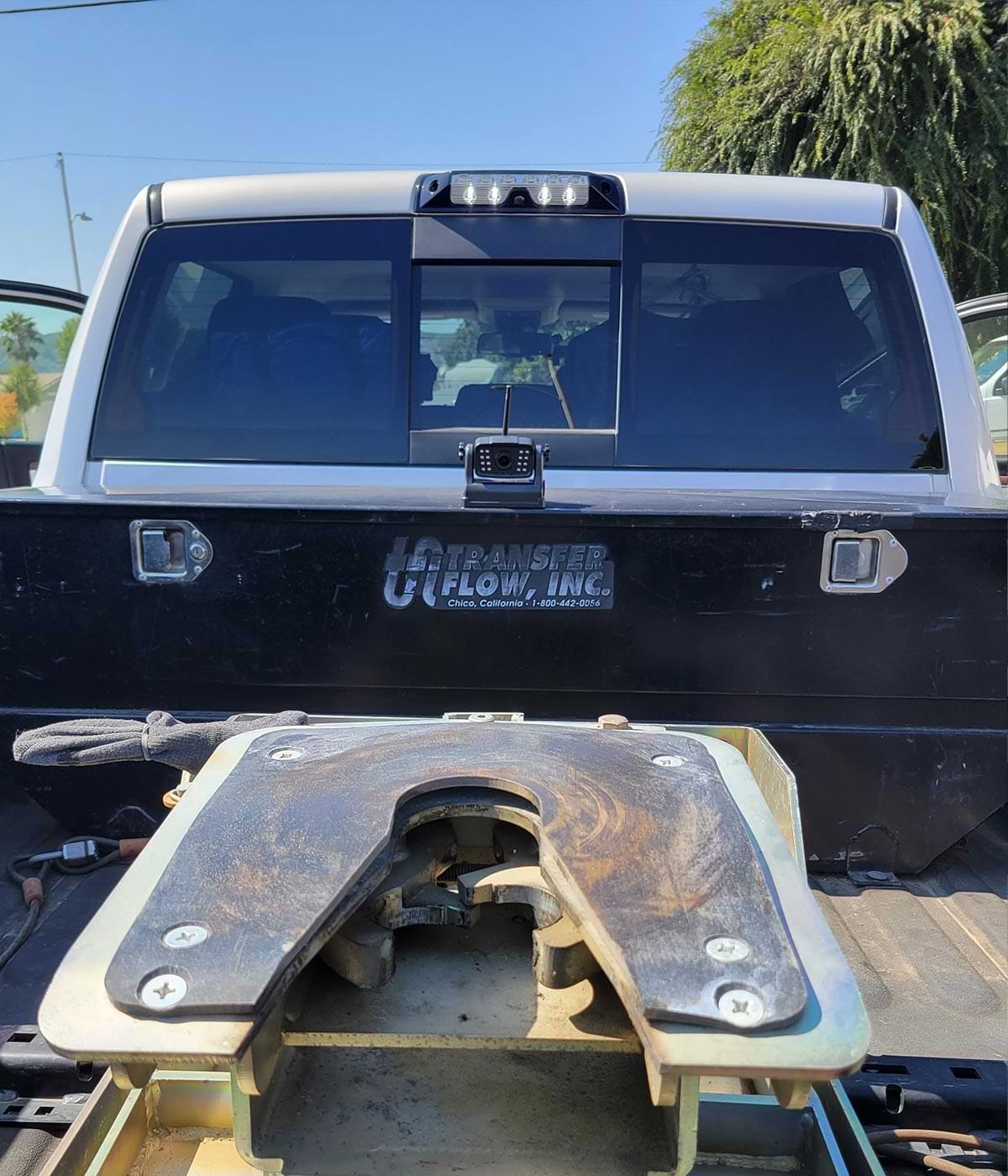
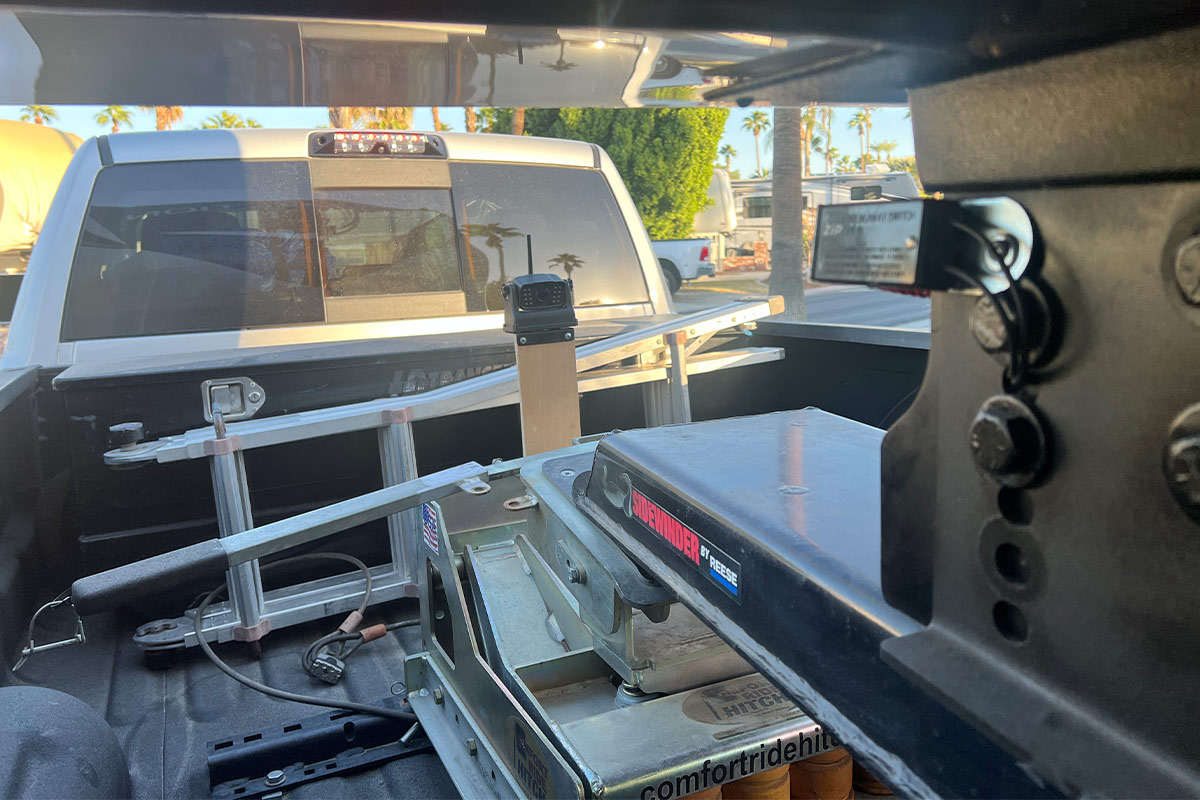
The camera and monitor were actually designed for providing vision when hitching trailers to tow vehicles — are all you travel trailer owners paying attention? — so it had all the right specifications for use in this type of environment. The V35 wireless camera also has a night vision function, so hitching in low light is not an issue, along with a IP69 waterproof rating. Plus, it can be charged with a common 5-volt charger used for many other electronic devices; the monitor plugs into any 12-volt DC power port near the tow vehicle’s dash. It can be mounted using the provided suction cup, or as I did, just placed temporarily on the dash when hitching up.
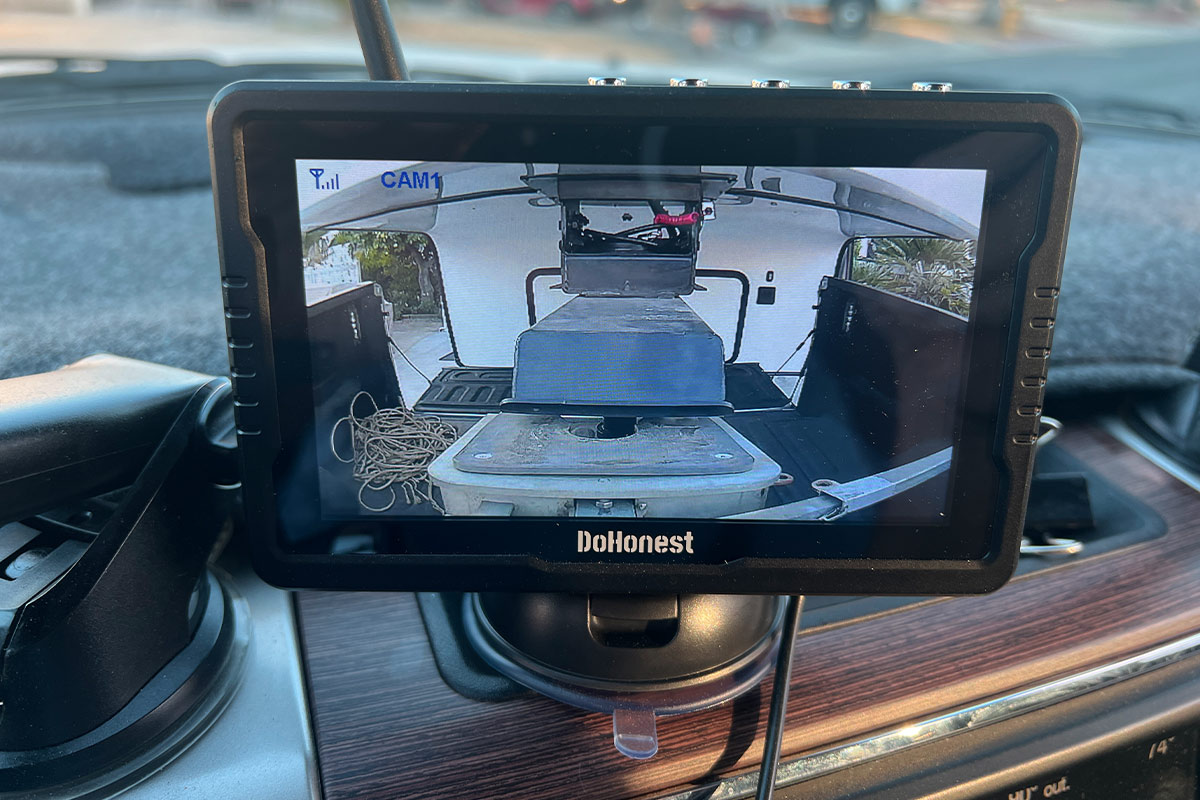
Because of the wide-angle lens, it’s still a little difficult to see detail until the truck gets closer to the fifth wheel hitch, but the resolution and clarity are terrific. If you have a standard set-up rather than the aforementioned Sidewinder kingpin box, it’s a lot easier to make the proper alignment. In all situations, watching the monitor eliminates adverse body twisting and the associated pain in my neck and back.
I think that I’ll continue to experiment with a few different camera locations, which can easily be done since only a C-clamp holds the makeshift bracket in place. I might even try to rig up a more permanent mounting position and incorporate a hinge to keep it out of the way (you don’t want the front of the fifth wheel to crash into the camera — if mounted too high — during tight maneuvers). At this point, though, I simply remove the camera after hitching to prevent pilferage. As an added bonus, you might even be able to temporarily place the camera in areas with limited vision — like backing into the RV site on your blind side.
Now hitching the fifth wheel is faster — and is no longer literally a pain in the neck.
Already a Subscriber? Click here for Access to the Full Issues.

